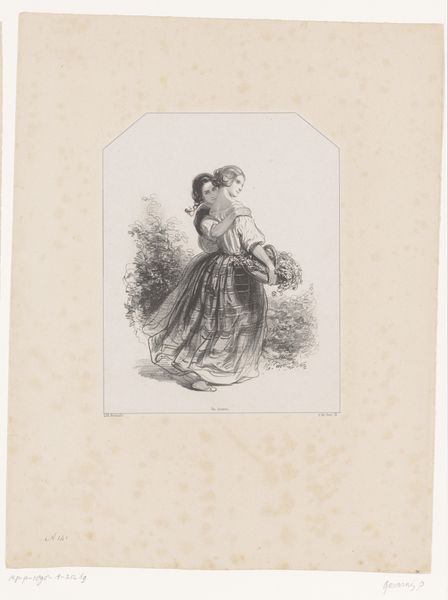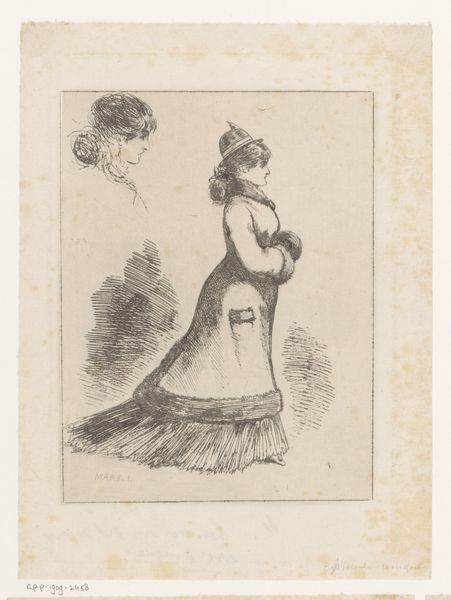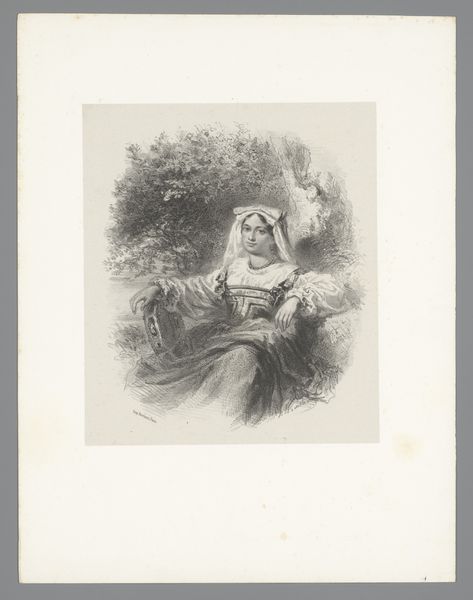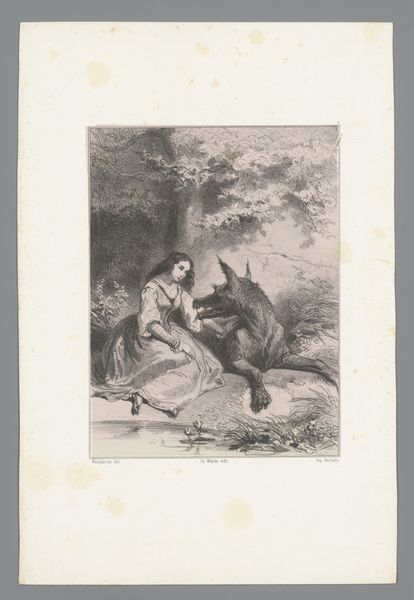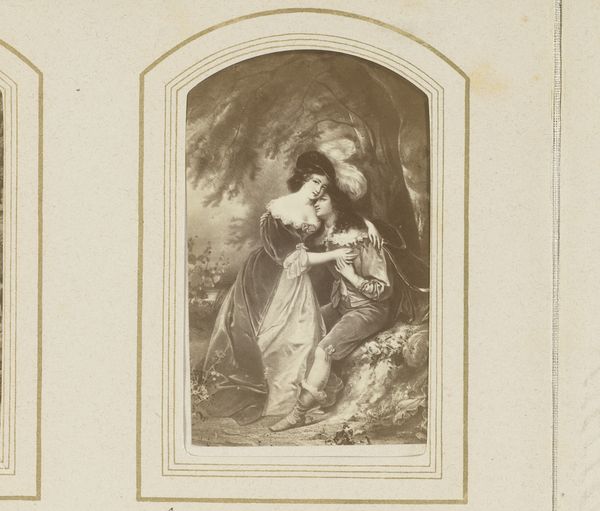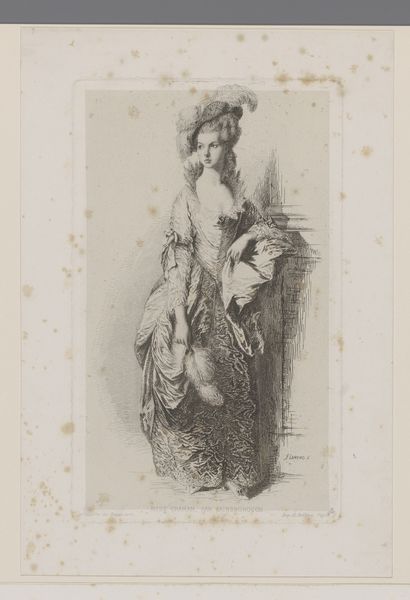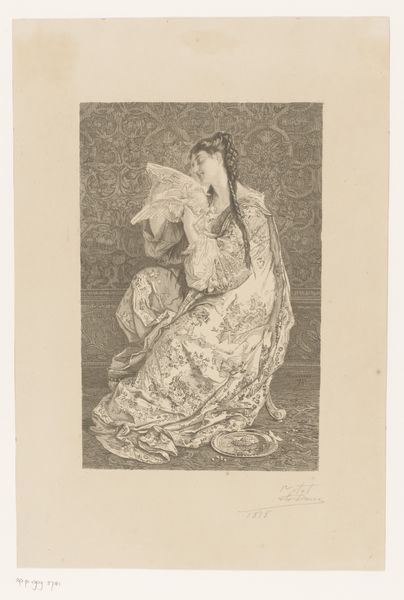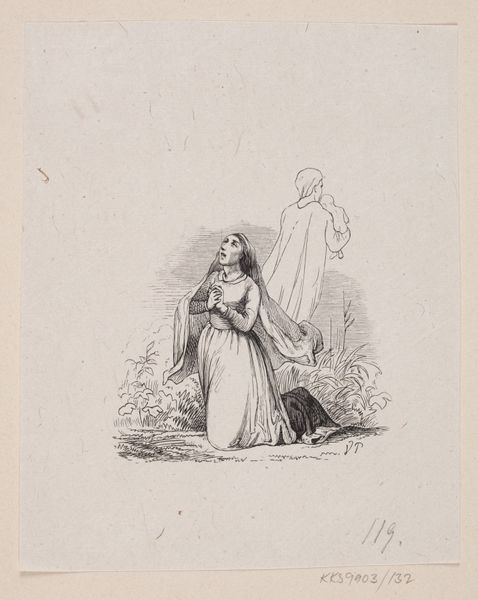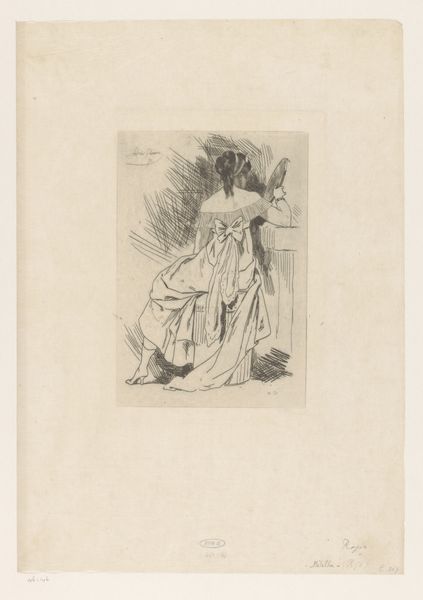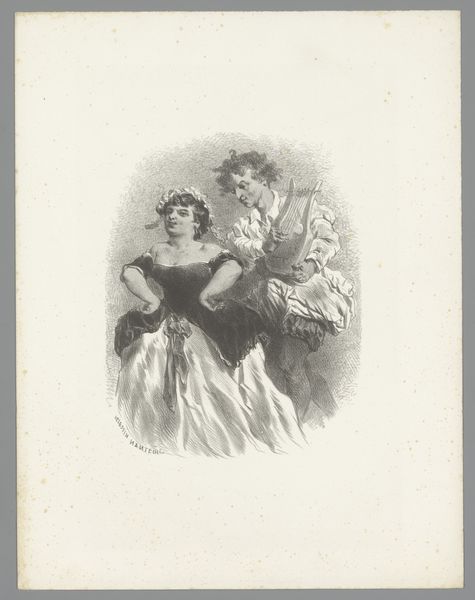
print, photography
#
portrait
# print
#
photography
#
genre-painting
#
academic-art
#
watercolor
#
realism
Dimensions: height 106 mm, width 63 mm
Copyright: Rijks Museum: Open Domain
Curator: Immediately, I get a quiet, romantic, almost sentimental feeling. Is it just me or does she seem melancholy? Editor: The piece we're looking at is called "Fotoreproductie van de prent The rustic toilet van James II Fisher." Dating from somewhere between 1855 and 1885, this photogravure on paper depicts a woman in a moment of private toilette. There's an echo here of earlier genre painting traditions and academic art practices, which were also fascinated with representing everyday life. Curator: Genre, sure, but it’s less a snapshot, and more like a constructed narrative, isn't it? Her gaze is lowered, demure, maybe a little sorrowful? She looks caught in between being practical, dressing her hair, but also, somehow wistful. The way the artist focuses on the simple flowers on her skirt against the tonal depth adds layers to her. Editor: Precisely. The flowers introduce complexity, and her modest garb belies a more knowing demeanor. She occupies a curious space between naturalism and a romanticised ideal. I would even suggest that, viewed through a modern lens, it prompts an interesting commentary about gender roles during this era. A certain vulnerability exists in these works which could represent beauty and societal pressure for women during that time. Curator: Good point. She embodies both: simplicity, represented through the plain style of dress. but, also she’s subtly objectified—framed as something pretty to observe. The image doesn't objectify directly. I wonder, how were images like this perceived when they were new? Was the audience moved by its gentleness or critical of this artificial representation? It is, as it seems, rich for interpretation. Editor: We can only speculate, but that mystery fuels its appeal, doesn’t it? There is enough familiarity to it that modern audiences will understand. But it provides a stark insight into another moment in our cultural past. These continuities, combined with what is also entirely unfamiliar, render these prints thought-provoking artifacts from the mid 19th-century Curator: A gentle contemplation from a time not so different from our own.
Comments
No comments
Be the first to comment and join the conversation on the ultimate creative platform.
